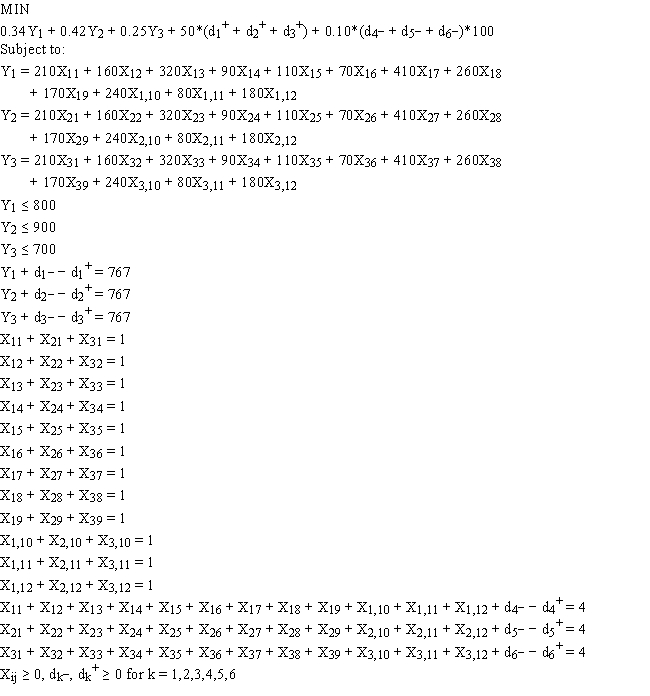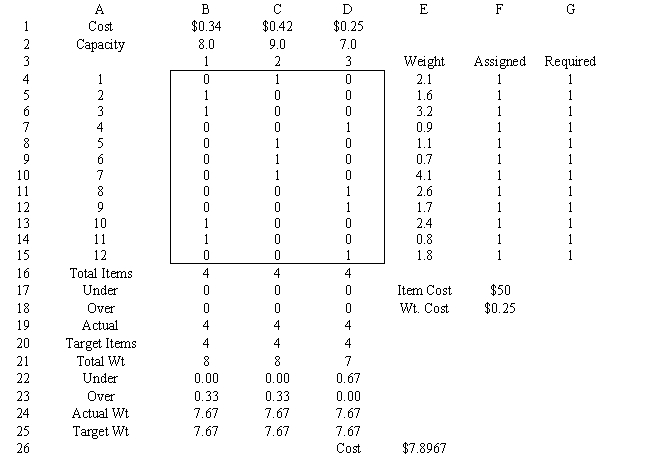Exhibit 7.4
The following questions are based on the problem below.
Robert Gardner runs a small, local-only delivery service. His fleet consists of three smaller panel trucks. He recently accepted a contract to deliver 12 shipping boxes of goods for delivery to 12 different customers. The box weights are: 210, 160, 320, 90, 110, 70, 410, 260, 170, 240, 80 and 180 for boxes 1 through 12, respectively. Since each truck differs each truck has different load capacities as given below:  Robert would like each truck equally loaded, both in terms of number of boxes and in terms of total weight, while minimizing his shipping costs. Assume a cost of $50 per item for trucks carrying extra boxes and $0.10 per pound cost for trucks carrying less weight.
Robert would like each truck equally loaded, both in terms of number of boxes and in terms of total weight, while minimizing his shipping costs. Assume a cost of $50 per item for trucks carrying extra boxes and $0.10 per pound cost for trucks carrying less weight.
The following integer goal programming formulation applies to his problem.
Y1 = weight loaded in truck 1; Y2 = weight loaded in truck 2; Y3 = weight loaded in truck 3;
Xi,j = 0 if truck i not loaded with box j; 1 if truck i loaded with box j.  Given the following spreadsheet solution of this integer goal programming formulation, answer the following questions.
Given the following spreadsheet solution of this integer goal programming formulation, answer the following questions. 
-Refer to Exhibit 7.4. What formulas should go in cell E26 of the spreadsheet?
Definitions:
Q19: A manufacturing company has a pool of
Q27: Refer to Exhibit 9.2. Interpret the meaning
Q39: The regression line denotes the _ between
Q47: When a variable is basic<br>A) it is
Q55: Which of the following probability distributions are
Q66: An investor is developing a portfolio of
Q76: Pete's Plastics manufactures plastic at plants in
Q79: As the number of replicates in a
Q98: Refer to Exhibit 11.11. What formula should
Q109: Refer to Exhibit 11.9. What are predicted